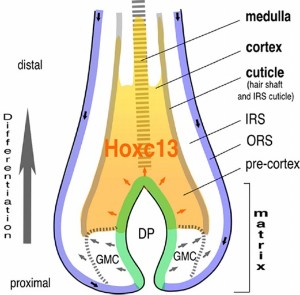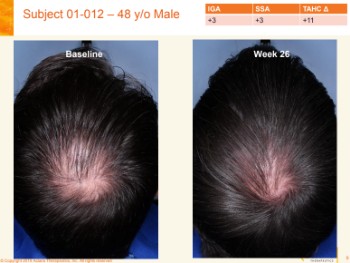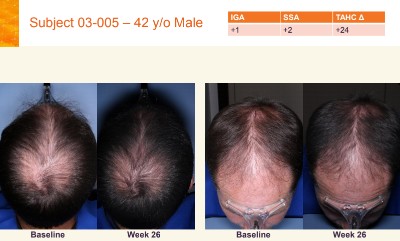Earlier this month, an online hair loss legend (a word I generally dislike using) e-mailed me out of the blue. His name is Stephen Ian Foote. He is an independent researcher based in the UK. Even though he is now in his 60s, it seems like Stephen is still extremely interested in hair loss research. I do not know anyone more persistent than Stephen in our sector of the internet. Over three decades of persistence and counting in his case.
Stephen Foote and the Hydraulic Theory of Hair Loss
Before I proceed to what Stephen sent me, below are some links of interest:
- Stephen Foote’s latest full correspondence paper/article (scroll down in there) published in 2018.
- His discussion paper on his theory titled: “A Review of the issues in Historic and Current Hair Research, and an Overlooked Connection“. He says this is his most important article.
- Stephen’s past comments on HLT (click on the “postings” tab).
- His 1995 paper was titled “Hair Growth and the Fluid Factor“
- His profile on Researchgate.
The below is written by Stephen for this blog’s readers:
My research into hair loss can be summed up very simply. Hair loss research is all about trying to find the cause of the restricted anagen growth of hair follicles within the dermal tissue, “within” the dermal tissue being the important point in my research.
In general tissue physiology, it is recognized that all normal tissue growth in vivo, is restricted by the growth control described here.
 This in vivo growth restricting factor must apply to hair follicle enlargement in the dermis, but is very clearly not being taken account of in the historic or current research into hair loss. My research is about what happens when you apply this in vivo growth control, to the known data about hair loss. This clearly
This in vivo growth restricting factor must apply to hair follicle enlargement in the dermis, but is very clearly not being taken account of in the historic or current research into hair loss. My research is about what happens when you apply this in vivo growth control, to the known data about hair loss. This clearly
explains why promising treatment indications in vitro and animal models, are just not working in the Human condition.
The Background
I am an English systems engineer, with over forty years’ experience of building and troubleshooting complex mechanical/hydraulic systems. On occasion I have acted as an expert witness in legal disputes in my field. I became involved with hair loss research entirely by chance, when I saw a TV science programme about this problem. Being affected by hair loss myself, I was keen to try to understand what was going on here.
From the information presented, what initially struck me about hair follicle enlargement from my systems engineering perspective, was the pocket based structure of the follicle, with the hair production area at its base. This means that any swelling or shrinkage of the surrounding tissue will distort the follicle in such a way as to change the size of the hair production area. This was in 1995, a time when I only had access to textbook physiology. My first article
about this was published in Medical Hypotheses, Hair Growth and the Fluid Factor, 1995 Jun; 44(6): 475-8.
Shortly after this, I developed a serious long term illness, and any further research into this had to be put on hold for a long time. In 2002 I got internet access, and getting hold of studies etc significantly improved, and I started to do more research into this issue.
I published another article in Medical Hypotheses, The hydraulic influence in androgen related hair growth, implications in autoimmune disease. doi:10.1016/S0306-9877(02)00259-1
I also joined the hair loss forums for links to further information, and to see if anyone could provide any scientific reason why I was on the wrong track here. There were a few posters who made such claims, but the so called science behind these claims was flawed in my opinion.
By this time I had contacted many expert scientists in the field about this issue in the current research, but just got a consistent no comment. It should be noted that this factor in follicle miniaturisation, predicted the failure of the established treatment research to produce results in the actual human condition.
Current Status
Seventeen years on, and so far this prediction has held true. As time passed, more and more information became available that further supported this dermal interaction, and in 2015 I published a more comprehensive review/discussion article on Researchgate.
Because of the continued refusal of the recognized experts to comment on this issue, I published my latest article that challenges scientists about this in Tissue Science and Engineering. This can also be read on Researchgate.
Ultimately there is a simple bottom line here. Any valid scientific theory is required to explain all the observations, without adding unnecessary complication (the rule of parsimony). In androgen related hair growth, any valid theory must therefore explain the following.
How DHT consistently increases hair growth in certain areas of the body, in something like a dose dependent manner. Also, why in just some individuals DHT has the opposite effect of reducing hair growth in certain scalp areas, in a none dose related way. Then you must explain all the related tissue changes.
These include significant changes in the sweating capacity of the affected tissues, reduced where hair growth is increased, and increased where hair growth is reduced. Also, the increased immune reactions, hypoxia, and fibrosis in the balding scalp. Then of course you must explain why certain hair transplantation procedures work, when others fail. The traditional claims about the role of DHT in changes in hair growth, cannot possibly conform to the established rules about valid scientific theories.
However, once you factor the currently overlooked spatial growth controls into the data about DHT related hair growth changes, it’s a very different story. Then you can explain all the factors described above, by just one initial action of DHT. You can do this using just accepted textbook physiology, and you don’t even need to know what is happening at the genetic/molecular level.
So, what does this mean in terms of treatments for hair loss? A primary role of spatial growth controls in hair follicle miniaturisation, explains why animal and in vitro studies have consistently failed to produce treatment results in Humans. The overruling nature of this in vivo growth control upon all “normal” tissue growth, predicts the same fate for all the current lines of treatment research.
Whilst the molecular details of this growth control are not fully understood, we do know that the Wnt’s pathway is involved here. This explains why manipulating Wnt’s does have an effect upon follicle size. But this is not a viable treatment strategy, because of the real danger of producing cancerous growth.
The in vivo spatial growth controls are also known to be relaxed somewhat during the healing process. This explains why scalp wounding can increase the local hair growth. But this is only a short term effect, and continuous wounding will increase the local fibrotic tissue, making the situation worse in the long term.
There is only ever going to be one way to significantly increase hair growth in these circumstances, and this is of course to significantly reduce the tissue pressure around the follicles. All the current treatments that have some effect upon increasing follicle size, all do this to some degree. Minoxidil, latanoprost, lasers, anti-inflammatories, massage, and reducing the androgen stimulus (Finasteride).
Knowing what the real target is, there are a few possible ways to reduce external tissue pressure a lot more effectively, with minimal side effects and probably quite cheaply. This would require however, that the people in the position to develop this kind of treatment, are prepared to pursue this.
Addendum
I think people should be aware that in my papers the basic claim is not mine, it is the recognized science in general tissue growth physiology. According to this, the historic and current research into the restricted growth of hair follicles, is overlooking a basic in vivo growth control that must be involved. It is the current hair loss research that is at odds with the mainstream science here.
I do have a degree of hair loss myself, but now in my 60’s, it does not concern me as much. And I have regrown a fair amount from my personal experiments.

